by Jennifer Kohlhepp | CM Magazine Featured
The Secret to Achieving Profitability in Card Manufacturing

In today’s market, there’s a wide variation on card builds, materials and options. Therefore, ensuring card manufacturers hit their business’s gross margin targets is more difficult than ever. George E. Daddis Jr. PhD, CEO/president at Bristol ID Technologies and an International Card Manufacturers Association (ICMA) board member, shares a secret to achieving profitability in card manufacturing by focusing on implementing a margin management system to hit your goals.
Factors Impeding Businesses from Meeting Goals
The various economic factors driving many U.S. manufacturing businesses and their control over gross margins include:
- Pricing competition from overseas which is continually pressuring pricing levels and therefore gross margins.
- The tight economic conditions in China which exacerbate this problem, as Asian businesses strive to drive more business through pricing[1].
- Inflation in North America continues to drive continuous changes in raw materials and labor costs. Given the desire to provide the best pricing for customers and card businesses in the current market, managing changes in the cost of goods sold (COGS) that are occurring quickly can also present great difficulties.
Value of Implementing a Target Management System
Annual operating plans and the sales forecasts, with projected product mix forecasts, provide the basis for setting targets in gross margins. As with many metrics, the business’s gross margin target is composed of multiple hierarchical elements—typically driven by segmentation by product line and volume band.
History and business goals provide the actual targets for the component segments. The weighted blend of gross margins from product lines/volume bands sets our targets. In setting gross margins, businesses start with this process and then corroborate with other “common sense” estimates. For example, gross margin targets might be cross checked with the latest raw materials, labor and quality costs.
Required Tools and Data
The most important tool for managing gross margins, and specifically managing variances from planned gross margins at the company-wide level, is a job cost tracking system. This system tracks:
- Materials usage
- Labor
- Inventory levels
- Quality metrics (e.g., re-runs, defects)
Secondarily, overall equipment efficiency (a machine usage metric) and other related measures can be tracked. Such a job cost tracking system is often part of a larger software package. Examples of such software packages include:
- Enterprise Resource Planning (ERP)
- Manufacturing Requirements Planning (MRP)
- Manufacturing Execution System (MES)
- Custom job shop manager software solution (a popular solution in the card manufacturing industry)
Data from these tools feed your gross margin analysis.
Do-It-Yourself Analysis Techniques
The primary goal of any gross margin analysis is to understand which of the many possible factors impacting gross margins is creating variation of actual margin from target margins. Factors can be variations in COGS materials, COGS labor, product mix, achieved pricing, cost of quality and sales volume vs. plan amongst several others.
If you can extract job data into a simple tool like Excel, you have the ability to set up a fairly complete analysis. The most important first step is to segment your job manufacturing data into units you can manage.
Usually it’s by product line. This consists of grouping jobs by similar card build or SKU. Jobs also can be grouped by volume band or manufacturing facility/line. The important part in deciding how to group is making sure that you can drive to a specific corrective action, if you find a variation in the group.
As a counter example, if you find that the level of COGS materials is high relative to the plan at the company level, this usually is not actionable. Which of your many material costs is high? Which facility used the materials? Were the sales levels achieved vs. planned the driver in COGS variation? There are still too many variables affecting the gross margin metric at the company level.
On the other hand, if you know that materials costs in hotel keys were high, you know where to look—likely in the 1K or ULC pre-lams.
Once jobs are grouped, ensure you build the right set of data. For each job, it’s most important to have the following for each of your groupings:
- COGS materials
- COGS labor
- COGS fixed/overhead
- Quality costs
- Quoted margin (i.e., the target margin sales assumed in the sales process)
- Job revenue
- Forecasted sales volumes by product and volume band levels to compare against actuals
Action Plans When Operations Stray from Goals
When company-wide gross margins stray from targets, the next questions are:
- Why?
- What’s the underlying cause?
There can be many drivers including:
- COGS categories (materials, labor and overhead varying from the plan)
- Pricing set/achieved by the sales team
- Mix of sales among product lines or volume bands
- Variation in sales volume—high or low—in product lines.
For instance, if gross margins are off in a product line relative to plan, the first questions to ask are:
- Is the quoted margin inconsistent with the job’s pricing? (i.e., is sales charging too much or too little)
- Is the actual achieved margin substantially different from the quoted margin? (i.e., manufacturing isn’t meeting their cost targets)
This allows you to focus quickly on operations or sales within your company for answers.
Even if each individual product line is meeting its targeted gross margins, the company margin can still be affected by product mix varying from the plan (i.e., selling too much of a low-margin product vs. high-margin product lines).
The Excel analysis described above will be presented at the ICMA EXPO. It is simple and commonsense. However, it will allow the production manager to separate gross margin variances into COGS issues, volume, product mix issues and pricing issues. This enables targeting corrections and effort to the right areas of the business.
If you’re interested in learning more, attend the presentation during the new Production 360 experience, which will take place on the final two days of the ICMA EXPO from May 15-16.




